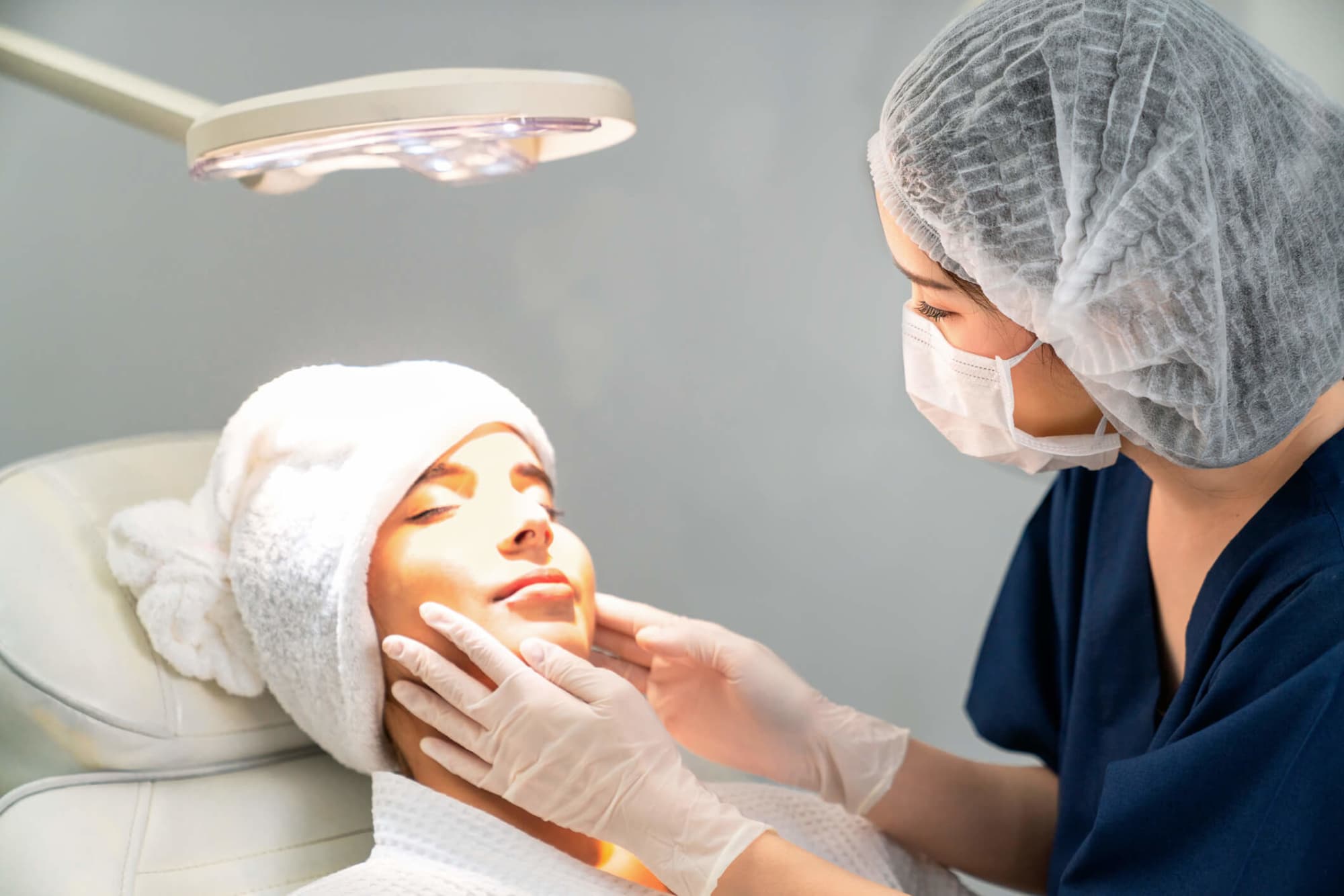The Function of a Dermatologist in Identifying and Treating Numerous Skin Problems
The function of a skin doctor expands much beyond basic skin care; it encompasses the intricate processes of identifying and dealing with a large range of skin problems. The complexity of skin problems typically requires a diverse technique that consists of not just medical interventions yet also individual education and learning and preventative approaches.
Relevance of Dermatological Knowledge
The experience of skin specialists is essential in the medical diagnosis and management of skin problems, as they have specialized knowledge that extends past general medical training. This sophisticated understanding is important for properly identifying a large range of skin conditions, which frequently offer with overlapping symptoms that can perplex non-specialist specialists. Dermatologists are trained to distinguish in between various skin problems, making sure appropriate treatment plans are implemented swiftly.
Furthermore, the area of dermatology incorporates an one-of-a-kind mix of medical skills and advanced modern technology. Dermatologists make use of innovative diagnostic devices, such as dermatoscopes and skin biopsies, to examine skin sores and determine their nature. This technological proficiency permits very early discovery of possibly significant conditions, including skin cancers cells, which can considerably boost individual results.

Common Skin Conditions Detected
Countless skin problems can offer with differing degrees of intensity and intricacy, making skin-related proficiency vital for accurate diagnosis and monitoring. Amongst one of the most widespread conditions are acne vulgaris, eczema, dermatitis, and psoriasis.
Acne vulgaris, defined by the visibility of pustules, comedones, and papules, mostly affects adolescents however can continue right into adulthood. Eczema, or atopic dermatitis, is a persistent inflammatory condition that brings about completely dry, scratchy, and swollen skin. Psoriasis is an autoimmune problem that manifests as red, scaly plaques, largely on extensor surfaces, and can substantially influence the lifestyle.
Various other typical problems include rosacea, which provides with face flushing and visible capillary, and seborrheic dermatitis, typically causing dandruff and oily spots on the scalp. Fungal infections, such as tinea pedis (professional athlete's foot) and tinea corporis (ringworm), are likewise often encountered.
These varied problems call for a comprehensive understanding of pathophysiology, along with knowledge of healing alternatives, to lead effective treatment strategies - Dermatologist Raleigh NC. Through exact medical diagnosis, skin specialists can provide customized monitoring plans that address both the signs and symptoms and underlying reasons for these common skin problems
Diagnostic Strategies Utilized
Just how do skin doctors accurately identify numerous skin disorders? Skin specialists utilize a combination of scientific analyses, analysis tools, and specialized techniques to make certain specific identification of skin disease. The preliminary step normally includes a thorough case history and physical exam. During this process, skin doctors evaluate the patient's signs, start, duration, and any potential triggers.
One of the key diagnostic methods is dermoscopy, which makes use of a handheld tool to magnify skin lesions, permitting comprehensive exam of frameworks not visible to the naked eye. In addition, skin biopsies are frequently done, where a tiny sample of skin is gotten rid of for histopathological analysis. This strategy is very useful for diagnosing conditions such as melanoma and various other skin cancers.
Patch testing is an additional vital approach used to identify call dermatitis by revealing small quantities of possible allergens to the skin. Moreover, lab examinations, including blood tests and societies, might be conducted to eliminate systemic concerns or infections. Collectively, these analysis techniques enable dermatologists to develop a comprehensive understanding of skin disorders, leading to precise diagnoses and educated client monitoring.

Treatment Alternatives Readily Available
A broad range of treatment options is available for handling skin disorders, customized to the certain problem and specific patient needs. Dermatologists employ both systemic and topical therapies, depending upon the intensity and kind of skin disorder. Topical treatments, such as corticosteroids, retinoids, and calcineurin preventions, more information are commonly suggested for problems like dermatitis, psoriasis, and acne. These representatives target inflammation and advertise skin healing.
For a lot more severe problems, systemic therapies might be required. These consist of oral medications such as antibiotics for bacterial infections and immunosuppressants for autoimmune conditions. Biologics, a more recent class of medications, have revealed efficacy in treating chronic inflammatory conditions like psoriasis and atopic dermatitis.
In addition to pharmacologic interventions, dermatologists might suggest procedural choices such as laser chemical, phototherapy, or treatment peels (Dermatologist Raleigh NC). These treatments can address coloring issues, acne scarring, and various other skin irregularities effectively
Additionally, way of life adjustments, including appropriate skin care routines and sunlight protection, play an important duty in the overall monitoring of skin problems. By integrating these therapy modalities, dermatologists aim to enhance patient results and improve lifestyle for those impacted by skin disease.
Client Education And Learning and Assistance
Empowerment with expertise is essential in the administration of skin disorders, as patient education and learning and support substantially influence therapy results. Skin specialists play an essential duty in giving individuals with comprehensive details concerning their problems, therapy choices, and self-care techniques. Efficient communication promotes a collaborative atmosphere where people can actively join their very own care.

Assistance expands past education and learning; it encompasses emotional reassurance and continuous inspiration. Skin doctors ought to develop a safe area for patients to express their problems and ask inquiries. Resources such as informative pamphlets, sites, and check these guys out assistance teams can additionally equip individuals, enabling them to get in touch with others dealing with similar obstacles.
Ultimately, a well-informed client is more probable to participate in their treatment trip, bring about better adherence, contentment, and enhanced wellness outcomes. The skin specialist's role in client education and learning and support is basic to maximizing the administration of skin problems.
Conclusion
In final thought, dermatologists play a necessary duty in the reliable diagnosis and treatment of a wide variety of skin disorders. Their customized competence, incorporated with advanced diagnostic methods and customized treatment plans, makes sure detailed treatment for clients. Furthermore, the emphasis on client education and learning fosters proactive administration of skin wellness, equipping people to take enlightened activities regarding their skin care programs. The contributions of skin doctors substantially boost the quality of life for those affected by skin disease.
The role of a skin specialist expands far past basic skin treatment; it my site encompasses the elaborate processes of identifying and treating a wide array of skin disorders. Skin specialists utilize advanced diagnostic devices, such as dermatoscopes and skin biopsies, to analyze skin sores and establish their nature. Inevitably, the specialized training and experience of skin doctors are important in supplying detailed treatment for individuals with skin conditions.
Additionally, skin biopsies are often carried out, wherein a little example of skin is removed for histopathological analysis. Collectively, these diagnostic methods enable skin specialists to create a thorough understanding of skin problems, leading to accurate diagnoses and notified individual monitoring.